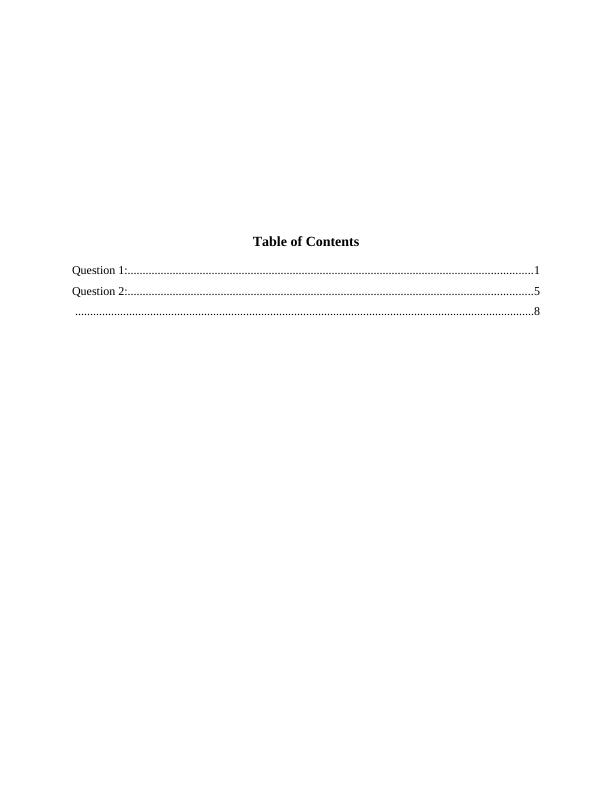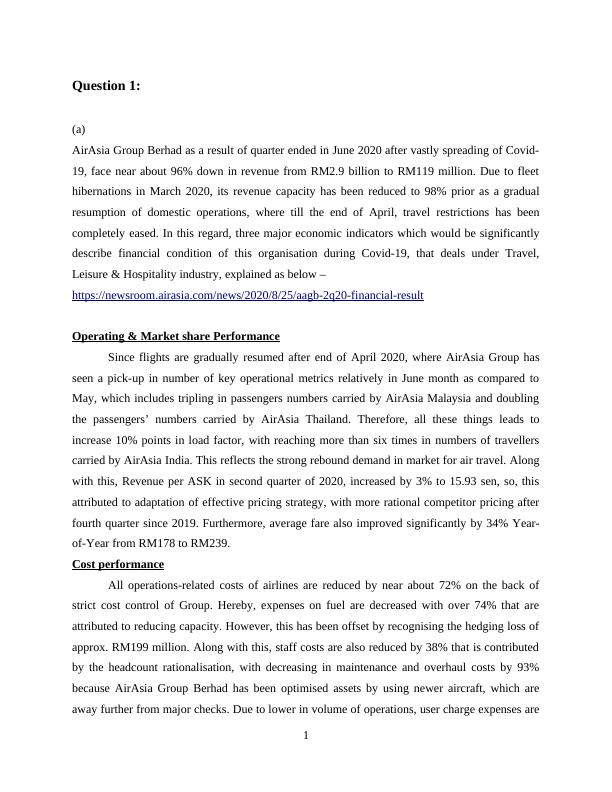Investment Management: Analysis of AirAsia Group Berhad's Financial Condition during Covid-19
Added on 2023-01-06
11 Pages1664 Words24 Views
End of preview
Want to access all the pages? Upload your documents or become a member.
Operational and Financial Impacts of COVID-19 on Airlines Industry
|6
|1261
|97
Impact of COVID-19 on Aviation Industry
|7
|1285
|92
Impact of Covid-19 on Airline Industry
|6
|1420
|94
(PDF) Impact of COVID-19 on Transportation Industry
|11
|2935
|68
Impact of COVID 19 on Airline Industry
|5
|716
|67
Etihad Airways Performance Analysis
|11
|3452
|45




